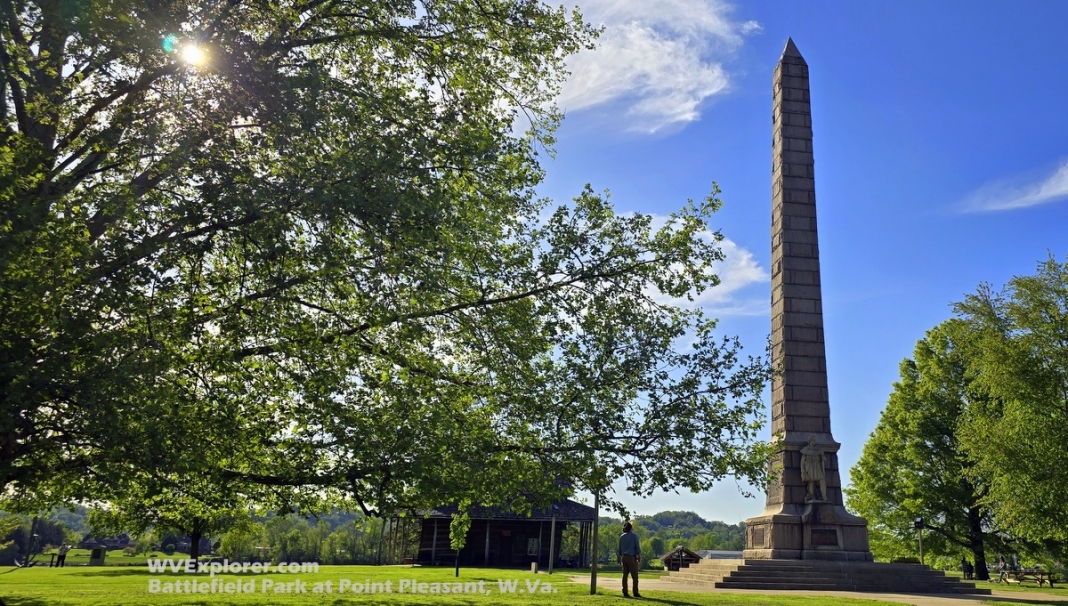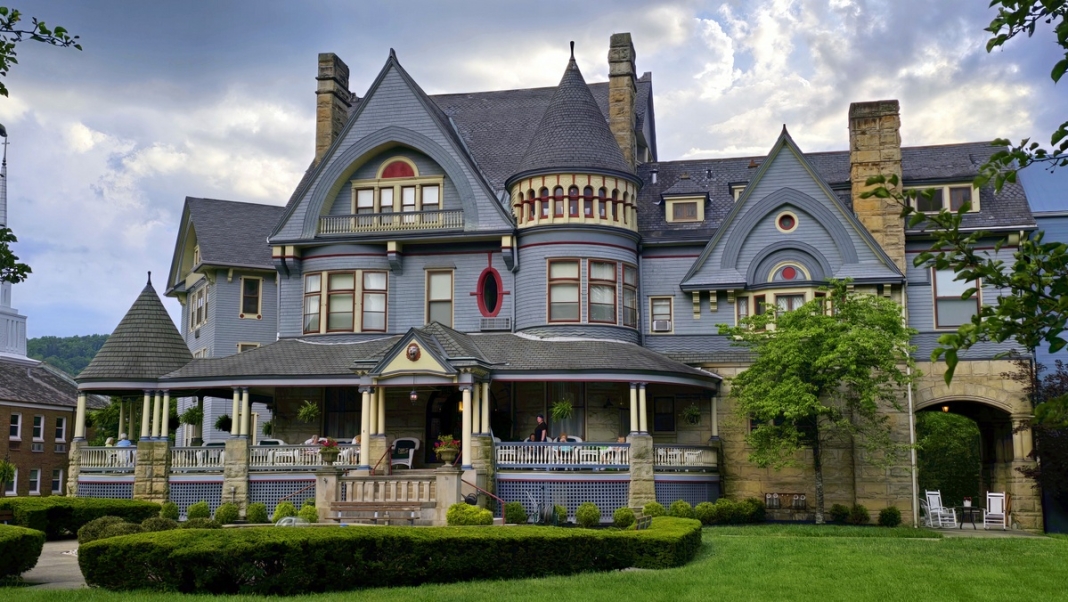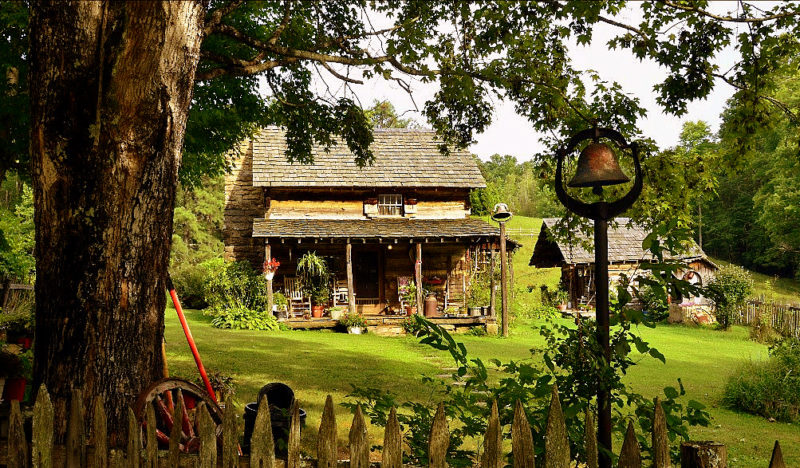POINT PLEASANT, W.Va. — While parts of the mountainous interior of West Virginia weren't settled until the early 1900s, two of its present incorporated communities were established before the American Revolution, and 10 were bustling before the 1800s.
Particularly along the Ohio and Potomac rivers, settlement began early, often before indigenous residents had wholly retreated from what would become the state and well before they had established treaties that permitted colonization by France and England.
The first regions to be settled were those that accommodated farming or were located along east-west passages through the Appalachian Mountains. The last to be settled were those that were the most rugged and were challenging to farm and traverse. These sections were found chiefly in the southwestern mountains of the state.
Note that indigenous peoples had formerly established large communities throughout what would become the state. Still, by the time the first Europeans arrived, only a few were known to exist, chiefly along the Ohio River. Disease and an invasion by the Iroquois during the Beaver Wars had destroyed many long-established native villages.
Here is a list of the 11 oldest existing towns in West Virginia. Please let us know if there's one we've missed.
1. Shepherdstown (1762)
Founded in 1762 and located along the Potomac River, Shepherdstown is widely recognized as the oldest town in West Virginia. Initially known as Mecklenburg, it played a crucial role during the American Revolutionary War and later served as a hub for transportation and trade. With its cobblestone streets, 18th-century buildings, and vibrant arts scene, Shepherdstown is a living museum of colonial and early American life.
2. Romney (1762)
Chartered on the same day as Shepherdstown, Romney is the oldest town in the Eastern Panhandle of the state. Situated in Hampshire County, it was a strategic location during both the French and Indian War and the American Civil War. Romney is also home to the West Virginia Schools for the Deaf and the Blind, which was established in 1870. Its rich Civil War history and charming small-town feel make it a significant stop on any historical tour.
3. Harpers Ferry (1763)
Harpers Ferry was officially established in 1763, but was settled in 1747 by Robert Harper, who began developing it as a ferry crossing and industrial site. It played a pivotal role in American history as the site of abolitionist John Brown's 1859 raid on the federal armory, an event that intensified tensions leading up to the Civil War. Strategically located at the confluence of the Potomac and Shenandoah rivers, it changed hands multiple times during the war due to its transportation and industrial importance.
4. Berkeley Springs (1776)
Originally known as Bath, this small town became famous in colonial times for its warm mineral springs. George Washington was a frequent visitor, and the town remains a spa destination to this day. Berkeley Springs combines historic allure with a thriving arts community and a flourishing natural wellness tourism industry.
5. Moorefield (1777)
Moorefield played a significant role during the French and Indian War and the American Civil War due to its strategic location in the South Branch Valley. It has long served as the county seat of Hardy County and remains a chief hub of agriculture and commerce. The valley is renowned for its poultry industry.
6. Martinsburg (1778)
Founded by General Adam Stephen during the American Revolution, Martinsburg became a vital railroad town in the 19th century and a center of Unionist support during the Civil War. Today, the city is renowned for its preserved historic districts, including the Adam Stephen House, and its status as a regional hub in the Eastern Panhandle.
7. Lewisburg (1782)
In a savannah in the Greenbrier Valley, Lewisburg was officially incorporated in 1782 but had been a settlement site since the 1750s. It quickly grew into a bustling town and remains a cultural and educational center, home to historic Carnegie Hall and the Greenbrier Valley Theatre. Lewisburg’s well-preserved downtown historic district reflects its colonial past and enduring charm.
8. Clarksburg (1785)
Clarksburg began as a frontier settlement and was incorporated in 1785. It played an essential role in the early development of what was then western Virginia and became a transportation hub with the arrival of the Baltimore & Ohio Railway. The town later gained significance as the birthplace of General Thomas "Stonewall" Jackson, a prominent Confederate general.
9. Morgantown (1785)
Now home to West Virginia University, Morgantown was established in the late 18th century and named after Zackquill Morgan, the town’s founder. Its location on the Monongahela River helped it grow from a modest settlement to a prominent city known for innovation, education, and its vibrant student culture.
10. Charles Town (1786)
Founded by Charles Washington, brother of George Washington, Charles Town has deep ties to the nation’s founding family. The town became the site of abolitionist John Brown’s trial and execution in 1859, a pivotal moment leading to the Civil War. Charles Town strikes a balance between historical reverence and modern vitality, particularly as the home to a popular racetrack and casino.
11. Wellsburg (1791)
Named after Charles Wells, Wellsburg developed as a key Ohio River port town supporting commerce and industry in the 19th century. It became the county seat of Brooke County and played a significant role in regional transportation and the glass manufacturing industry.
12. Point Pleasant (1794)
At the confluence of the Ohio and Kanawha rivers, Point Pleasant is best known as the site of the 1774 Battle of Point Pleasant, one of the most important battles for colonial dominance over indigenous peoples. Officially incorporated in 1794, it gained notoriety in the 20th century due to the Mothman legend. Its riverside location and museum scene make it a historical and paranormal curiosity alike.
13. Wheeling (1795)
Although it was settled as early as the 1760s, Wheeling was incorporated in 1795. It served as the capital of the Restored Government of Virginia during the Civil War and was later the first capital of West Virginia. As an early industrial city and a key stop along the National Road, Wheeling has a storied past and remains a landmark of the state’s heritage.
From colonial battlegrounds to healing springs and historic railroad junctions, these ten towns have played a pivotal role in shaping the story of West Virginia. Preserving their legacies continues to offer both residents and visitors a connection to the past and a glimpse into the frontier spirit that built the Mountain State.
Strange rock carvings greeted early explorers of West Virginia

When pioneers and other explorers first ventured into what would become West Virginia, they encountered artifacts of a much earlier age — carvings, burial mounds, and stone walls, the origins of which natives could not explain with certainty. READ THE FULL STORY HERE.
Sign up to receive a FREE copy of West Virginia Explorer Magazine in your email weekly. Sign me up!



Lilly was one of the first Appalachian settlements in present day West Virginia, settled by Robert and Frances Lilly in the 1700s along with Josiah Meador and their families. The Bluestone area was used by Native Americans before this time because of its abundant supply of natural resources.
Robert Lilly and Josiah Meadors chose the area to carve a new way of life for themselves and their families. They moved from Dublin Pulaski, Virginia, to what is present-day West Virginia. Both families settled on the Bluestone River, where they survived by subsistence farming and logging. It has been said the families arrived with a bible, an axe, and a gun and created a new life on wild and rugged land. Lilly soon became home to over thirty families.
Lilly continued to thrive until the mid 1900s when the construction of the Bluestone Dam began. Construction calculations predicted Lilly would be underwater, and residents were forced to move. Cemeteries were exhumed and moved to new locations. Buildings, churches, and homes were all destroyed or moved to new locations. A few of their foundations still remain, offering a tangible link to the families who once struggled to survive here. While walking through the old settlement of Lilly today you can still see foundations of old structures scattered throughout the area, or a coal bucket laying on the ground offering one of the only clues that a once thriving community was based here.
Good read on our common ancestors.
Lots of genealogy on these families on the free wikitree site.
Leaving Harpers Ferry off the list is a fairly huge oversight.
See my comment below detailing the history of Harpers Ferry.
Harper's Ferry is on here at number 3
Harpers Ferry is number 3 on the list.
Reminiscing about my home state, always present state, is full of my love for WV. West Virginia was spelled out without the abbreviation until probably the mid 1960’s or 1970’s, when the postal service (I think) which is a valuable asset our country to expedite mail developed the abbreviation. We used W. Va. Huntington in Cabell County has great history. Some houses in Cabell County have the original deed in
Richmond,VA.
Born and raised in Parkersburg and now living in CA. Love reading about the state that I have cherished all my life. Proud of the people of WV because they are more down to earth and hardest working people I have ever met. Proud of the history it carries. Please keep this going.
I'm a recent transplant to California from West Virginia. Just curious where are you from in West Virginia? I've been homesick lately. I've been here for a little over 2 months. Although I love it here in California, West Virginia will always be my true home!
Harpers Ferry was first established in 1763 by the Virginia General Assembly as “Shenandoah Falls at Mr. Harper’s Ferry”. It was reincorporated by the General Assembly in 1851, this time as “Harper’s Ferry”. The town of Virginius, located on Virginius Island in the Shenandoah River, was absorbed by Harpers Ferry during the 1851 reincorporation. The federal government declared martial law in the town during the Civil War. After the war, on 21 February 1867, the West Virginia Legislature repealed the 1851 Virginia act. Finally, Harpers Ferry (with no apostrophe) was reincorporated by the Circuit Court of Jefferson County on 16 April 1872, lasting to this day.
Excellent information! We're going to add it to our page about Harpers Ferry. Thank you!
Wellsburg in Brooke County was first chartered in 1791 as Charlestown, Virginia, making it older than your #11 and #12. The name was changed to Wellsburg in 1816 to avoid confusion with Charles Town in Jefferson County.
Proud to be an American from West Virginia. A beautiful state and great place to live.
Dont forget about Cedar Grove wv 1773
Barrackville was settled in 1767. Your story isn't quite correct.
Respectfully, the author, did include Harpers Ferry on the list as #3; agree: it deserves inclusion.
Respectfully, the author gaffed:
Romney, while a more eastern site in the whole of the state, most definitely, is not to be confused as being IN the Eastern Panhandle (EP: Jefferson, Berkeley & Morgan counties, as maps will attest).
Shepherdstown is situated in Jefferson Co, the county which is the vertex of WV, MD & VA at the EP tip.
Fun article overall:👍🏼